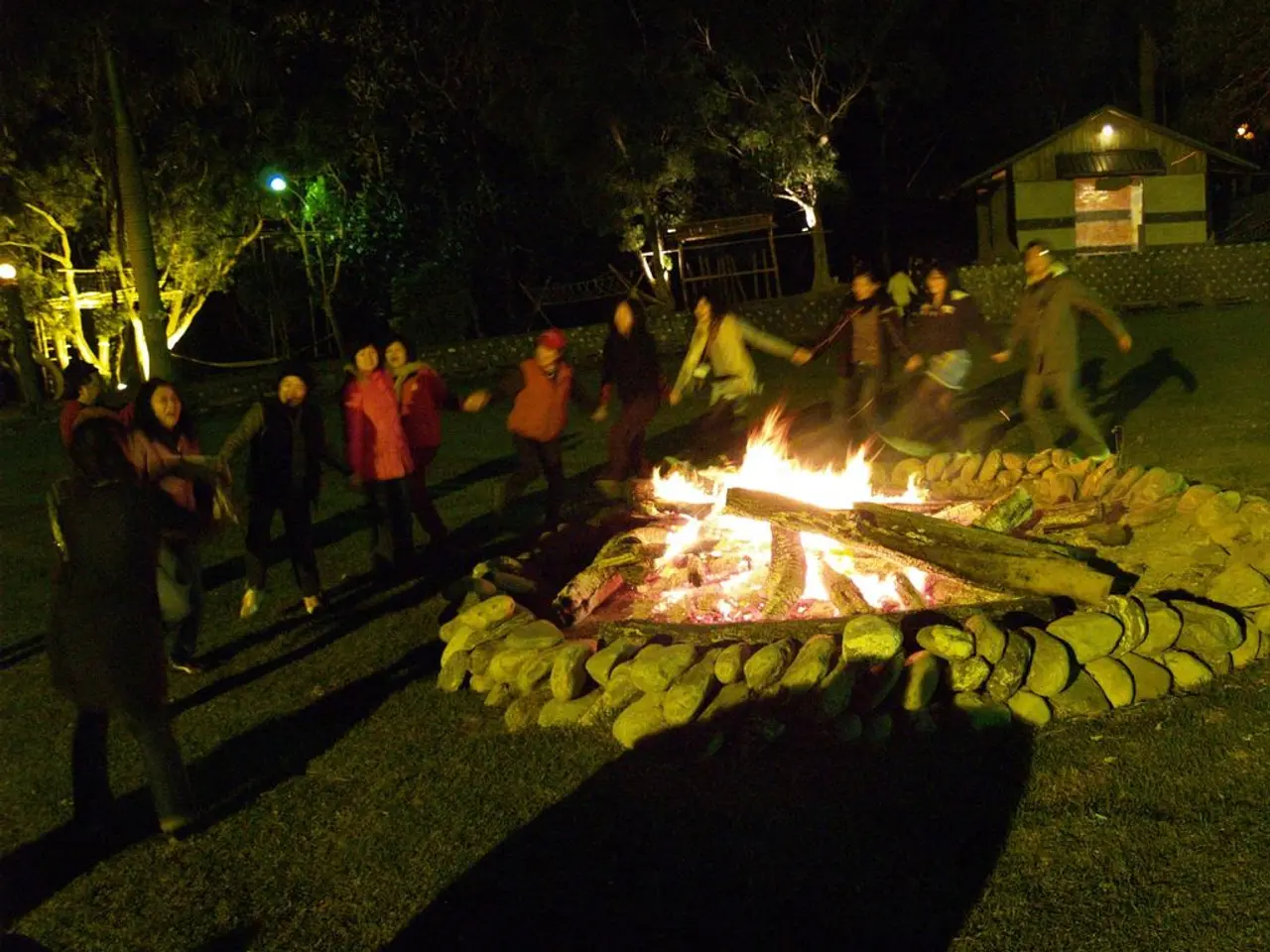Ceremony Involvement and its Impact on Brain Chemistry: Fire Ceremonies Scrutinized
In the distant past, over a million years ago, our early human ancestors, Homo erectus, began to harness the power of fire. This transformative discovery was not just for warmth, light, and cooking, but also for rituals and ceremonies that would shape human culture for millennia to come.
Fire ceremonies, practiced primarily in Africa and Eurasia, have been a cornerstone of human tradition for thousands of years. These ceremonies, steeped in symbolism and renewal, offer a unique blend of sensory experiences that can enhance resilience and focus.
The flickering flames produce irregular yet patterned light, a sight that can entrain brain rhythms, inducing a state of relaxation similar to meditation. The crackling sound of burning wood provides steady, natural auditory input, soothing the nervous system.
The smell of smoke and burning herbs can influence limbic circuits tied to memory and emotion, while the warmth of fire activates touch and comfort pathways, adding to relaxation and safety cues.
Fire rituals strengthen group cohesion through shared experiences and the release of oxytocin, a hormone associated with trust, belonging, and cooperation. Sharing fire rituals with friends or community groups can amplify these social benefits.
Participating in fire ceremonies boosts serotonin, dopamine, and endorphins, hormones that contribute to improved mood. Extended focus on firelight combined with rhythmic activity can induce trance-like states, providing a meditative experience.
Research on ritual and meditation suggests several neurochemical shifts during fire ceremonies: reduced cortisol levels, increased serotonin, dopamine release, and endorphin release. These inputs combine to shift the autonomic nervous system away from stress and toward parasympathetic relaxation.
Anthropologists suggest that rituals like fire ceremonies help regulate social cohesion, emotional release, and spiritual meaning. Mindful fire-gazing can be a meditative practice for 10-15 minutes, offering a simple yet powerful way to find inner peace in our modern, fast-paced world.
Writing down worries or goals and burning them safely can provide a psychological release, symbolising the letting go of negative emotions and the pursuit of new beginnings.
In conclusion, fire ceremonies, with their rich history and multisensory appeal, offer a unique and powerful tool for mindfulness and emotional regulation. Whether practiced in the wilderness or in a contained setting like a fire bowl, these ancient rituals continue to resonate with us today, providing a connection to our past and a pathway to a more relaxed, focused, and fulfilling future.
Read also:
- Nightly sweat episodes linked to GERD: Crucial insights explained
- Antitussives: List of Examples, Functions, Adverse Reactions, and Additional Details
- Asthma Diagnosis: Exploring FeNO Tests and Related Treatments
- Unfortunate Financial Disarray for a Family from California After an Expensive Emergency Room Visit with Their Burned Infant








